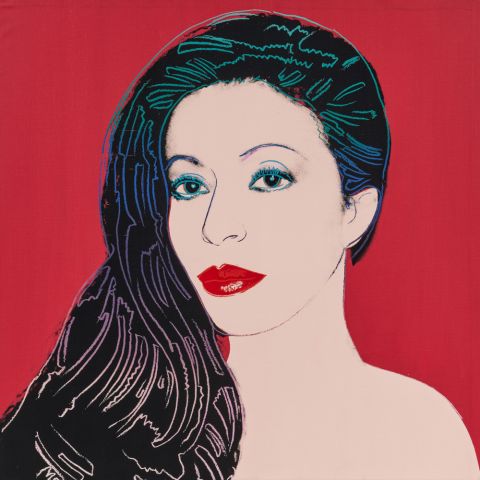
Lot 43 | Thomas Struth | "Paradise 20 (Bayrischer Wald)"
1954 Geldern/Lower Rhine
Title: "Paradise 20 (Bayrischer Wald)".
Date: 1999.
Technique: C-Print/Diasec.
Depiction Size: 138,5 x 175cm.
Sheet Size: As seen in frame: 144.5 x 184.5cm.
Notation: Signed as well as typographically dated, titled and numbered on label on back of frame.
Number: 1/10.
Frame: Artist's frame. Not examined out of the frame.
The work is listed in the artist's catalogue under number 7851.
Provenance:
- Lempertz, Cologne, 1079th auction, 3rd December 2016, lot 471
- Private collection Hessen
Literature:
- Exhib. cat. Thomas Struth. New Pictures from Paradise, Universitat Salamanca, Centro de Fotografia u.a., Munich 2002, n. p. with ill.
- Thomas Struth. New Pictures from Paradise, Munich 2017, p. 71, ill. p. 38/39
- This student of Becher is considered the leading representative of the Düsseldorf School of Photography
- His 'Paradies' series shows remote forests around the world, far away from human civilisation
- Dense, all-over motif with high depth of field that challenges the viewer in a special way
First influences
Berlin-based Thomas Struth studied photography at the Düsseldorf Art Academy under Ernst and Hilla Becher together with Candida Höfer, Andreas Gursky and Thomas Ruff. Struth's serial structuring and his systematic approach to the conception of his photographs show clear references to the sober, conceptual approach of the Becher School. The influence of Gerhard Richter, who also taught him at the academy, was equally formative for his oeuvre. The close relationship with Richter is documented by the portraits Struth made of his mentor and his family. Struth is considered one of the most important contemporary German photographers and has an exceptional exhibition history that includes the Stedelijk Museum in Amsterdam, the Venice Biennale (1990), Documenta IX, the Prado in Madrid, the Guggenheim Museum and the MoMA in New York.
Images of paradise
Since 1998, Struth has repeatedly focussed on the lush flora and fauna of the forests of America, Asia and Europe. The work ‘Paradise 20 (Bayrischer Wald)’ from 1999 can also be categorised in the series of ‘Pictures of Paradise’. The starting point for his in-depth examination of the depiction of nature was a trip to the climate and human rights activist Gertrude Duby, which he was unable to take due to unrest following her death. Duby dedicated her life's work to the reconstruction of the rainforest in Chiapas, for which she not only received worldwide attention, but also the title ‘Queen of the Rainforest’ from the indigenous Maya.
By describing nature as a ‘paradise’, Struth refers to the tradition of Baroque landscape painting, but deliberately dispenses with classical compositional patterns and opens up a new and political narrative to the concept of paradise, which has so far been little reflected upon in terms of content and religion. While in his earlier ‘Landscapes’ Struth consciously used common compositional patterns to depict anthropogenic landscapes, such as farmland, in his paradise photographs he deliberately dispenses with this art-historical moment. At the same time, he breaks away from the compositional scheme of the Becher school, which focuses on the centre of the image. He chooses large areas for his image details and allows the dense vegetation of the forest to take up the entire picture surface. The sky and the forest floor are generally only used as a creative accessory, without taking on a composition-determining or framing function.
Transcendental quality
In the kaleidoscopic interplay of the diffuse, indirect incidence of light in the shady pine forest, in the simultaneity of proximity and distance to the scenery, the strictly vertical tree trunks and the feathery canopy of leaves, Struth unites opposites in harmony and creates an incomparably intimate moment of melancholy and quiet sentimentality. The milky light and the effect of the blurred edges lend the scene an almost unreal, transcendental quality, especially as neither the sky nor the forest floor are shown directly. The perspective of perception and the audience's point of view therefore seem to be suspended. This is supported by the large format chosen, which completely captures, directs and simultaneously alienates the viewer's gaze. The viewer's gaze is drawn into the scene as if by a pull, from the diffusely blurred edges of the picture to the sharply contoured and strictly defined centre. The focus is on the central tree, which forms the dominant motif of the work and at the same time obscures the view into the depths of the forest. Struth visualises an alien world that opens up from a European perspective in the familiar coniferous forest.
Print this lot | Recommend lot |
Conditions of this Lot
32% buyer’s premium on the hammer price
Estimated shipping costs for this lot:
Arrangement after the auction.
Thomas Struth Germany Becher School Photographs Contemporary Art 1990s Artist's frame. Not examined out of the frame Forest Photography C-print Tree
More lots which could be of your interest
- Estimate: 3.000 - 5.000 €Starting price : 3.000 €0 Bid(s)08T 01h:06m:41sBeyond the Mainstream - A Rhenish Collection | ONLINE ONLY | Auction 20.11.2025
- Estimate: 3.000 - 5.000 €Starting price : 3.000 €0 Bid(s)08T 01h:07m:41sBeyond the Mainstream - A Rhenish Collection | ONLINE ONLY | Auction 20.11.2025
- Estimate: 3.000 - 5.000 €Starting price : 3.000 €0 Bid(s)08T 01h:08m:41sBeyond the Mainstream - A Rhenish Collection | ONLINE ONLY | Auction 20.11.2025
- Estimate: 3.000 - 5.000 €Starting price : 3.000 €0 Bid(s)08T 01h:09m:41sBeyond the Mainstream - A Rhenish Collection | ONLINE ONLY | Auction 20.11.2025
- Estimate: 4.000 - 6.000 €Starting price : 4.000 €0 Bid(s)08T 01h:19m:41sBeyond the Mainstream - A Rhenish Collection | ONLINE ONLY | Auction 20.11.2025









